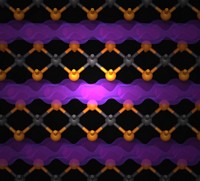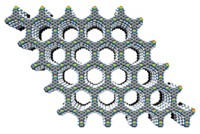Advertisement
Grab your lab coat. Let's get started
Welcome!
Welcome!
Create an account below to get 6 C&EN articles per month, receive newsletters and more - all free.
It seems this is your first time logging in online. Please enter the following information to continue.
As an ACS member you automatically get access to this site. All we need is few more details to create your reading experience.
Not you? Sign in with a different account.
Not you? Sign in with a different account.
ERROR 1
ERROR 1
ERROR 2
ERROR 2
ERROR 2
ERROR 2
ERROR 2
Password and Confirm password must match.
If you have an ACS member number, please enter it here so we can link this account to your membership. (optional)
ERROR 2
ACS values your privacy. By submitting your information, you are gaining access to C&EN and subscribing to our weekly newsletter. We use the information you provide to make your reading experience better, and we will never sell your data to third party members.
Materials
Superconductor Is Simply Organic
Materials: Graphene subunit is a new class of organic high-temperature superconductors
by Elizabeth K. Wilson
March 8, 2010
| A version of this story appeared in
Volume 88, Issue 10

The discovery of a new hydrocarbon high-temperature superconductor, based on a subunit of graphene, represents the first new class of organic superconductors in more than a decade and carries with it the potential for researchers to develop innumerable molecular variations. It also helps steer the physics-dominated field of superconductivity in the direction of chemistry.
A Japanese team led by Yoshihiro Kubozono, a chemistry and surface science professor at Okayama University, reports that crystals of the planar molecule picene—which is composed of five fused benzenes—superconducts at 18 K when doped with potassium or rubidium atoms (Nature 2009, 464, 76).
Although that temperature is relatively frigid compared with the over 100 K superconducting temperatures (Tc) of some ceramic superconductors, it's comparable with the Tc of other organic superconductors such as potassium-doped buckminsterfullerene (38 K) and calcium-intercalated graphite (11 K).
Scientists continue to hunt for new high-temperature superconductors because they are thought to be ideal materials for efficient electric motors and power storage and distribution systems.
Since high-temperature superconductors began appearing in labs in the 1980s, the list has expanded from the first copper oxide materials to include such compounds as magnesium diboride and even some organic molecules. As picene may be regarded as a fragment of the carbon chicken-wire material graphene, Kubozono notes, alkali-doped acene superconductors could be a big family.
"Picene is not a special molecule, but common," says Kubozono. "Therefore we may expect new acene superconductors."
According to theories of superconductivity, lowering certain materials' temperatures generates so-called Cooper pair electrons that overcome their mutual repulsion and can thus flow through the material unimpeded. Organic materials that superconduct are generally based on aromatic compounds, which have systems of π orbitals. Electrons donated to these π orbitals from alkali metal atoms can, under certain conditions, superconduct.
The authors reasoned that because picene resembles a two-dimensional segment of graphite, it might also superconduct when doped. It did, and as chemistry professors Matthew J. Rosseinsky at the University of Liverpool and Kosmas Prassides at Durham University, both in England, say in a perspective accompanying the report, "this is the first example of a molecular superconductor in which the organic component contains only carbon and hydrogen atoms."
Despite picene's resemblance to graphite, its electronics resemble those of superconducting metal-doped fullerenes, they note. That electronics evidence notwithstanding, picene's superconducting mechanism has yet to be fully elucidated, Kubozono's team reports. But the importance of picene's structure is highlighted when it's compared with the molecule pentacene, which is isomeric with picene, but is linear: Alkali-metal-intercalated pentacene molecules do not superconduct.
"I think this striking difference is quite interesting, and suggests a clue to understanding the origin of superconductivity in intercalated aromatic hydrocarbon systems," says Tokyo Institute of Technology professor Hideo Hosono, whose lab recently discovered a family of iron-arsenide superconductors (C&EN, Oct. 20, 2008, page 15).
Kubozono's lab is now searching for related superconductors by intercalating metal atoms into other acenes.
Hosono notes that many of the players in recent superconductivity research have chemistry backgrounds. Many of his lab's superconducting discoveries were first reported in chemistry journals such as the Journal of the American Chemical Society.
"Materials research on superconductors has been extensively conducted [in the field of] condensed-matter physics," Hosono says. "However, I feel the role of chemistry is rapidly increasing in exploring new superconductors."






Join the conversation
Contact the reporter
Submit a Letter to the Editor for publication
Engage with us on Twitter